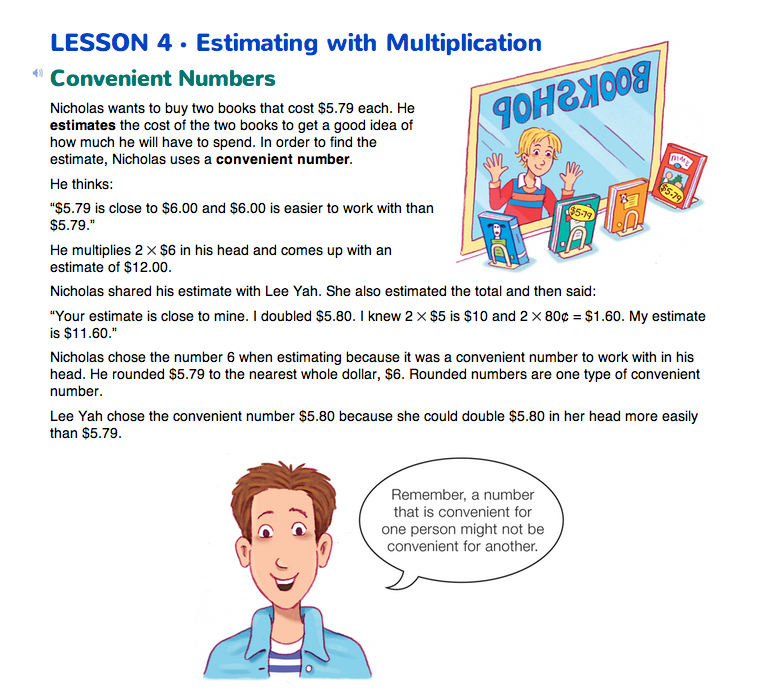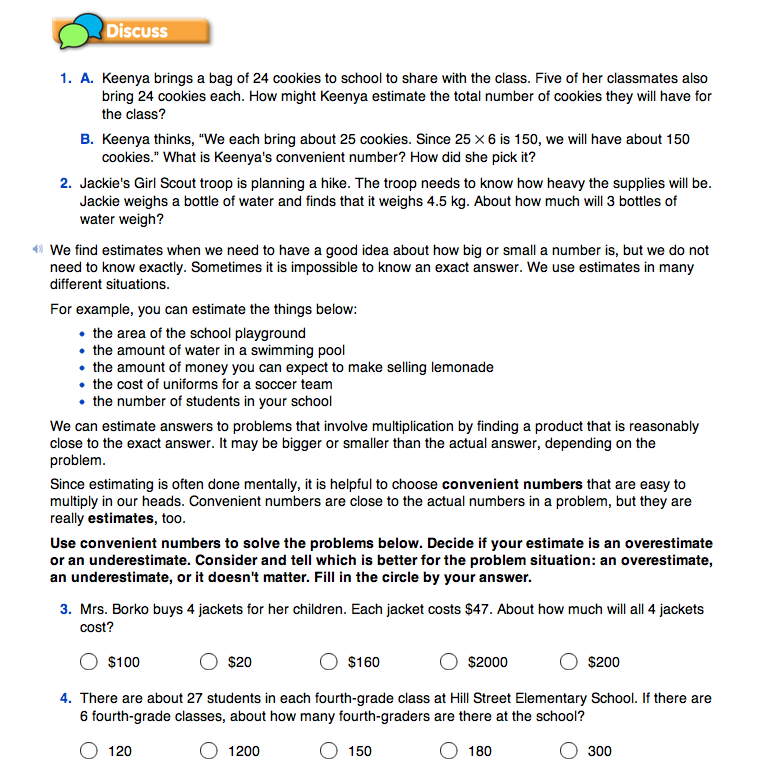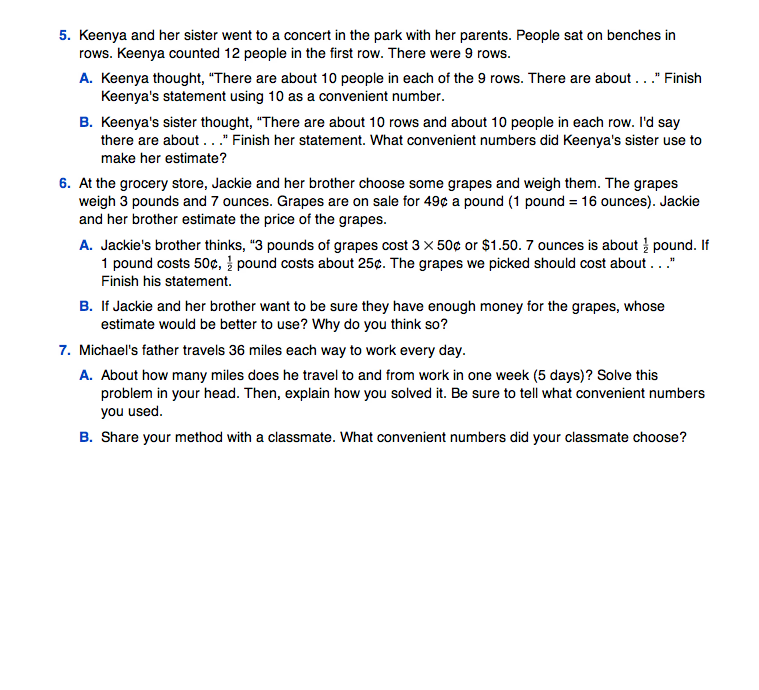Estimating with Multiplication
Est. Class Sessions: 2Developing the Lesson
Part 1: Estimating with Multiplication
Until now, students have estimated quantities or estimated to determine if an answer is reasonable. Here, they estimate for situations in which an exact answer is not possible or necessary. In these cases, an estimate is good enough. Remind students that the word estimate means “about how much.” “Estimate” can be used as a noun or a verb. We “estimate” the number of people at a ball game to get an “estimate.”
Discuss the following questions that involve money and estimating. In real life, we may need to consider sales tax when discussing purchasing items. You can say that for now you will not consider sales tax or say “plus some more for tax” in answering money problems.
Ask:
Next, have students read the introduction on the Estimating with Multiplication pages in the Student Guide. Nicholas and Lee Yah use different convenient numbers to estimate the answer to $5.79 × 2. Use this example to emphasize that estimates will vary from student to student.
Ask:
Emphasize that in some situations it is better to underestimate, and in other situations it is better to overestimate.
Ask:
Have students discuss and then solve Questions 1–7, first in groups and then as a class. In Question 3, to estimate the answer to $47 × 4, students might round 47 to 50 and get an estimate of $200. Others might use front-end estimation and use the convenient number 40. These students would get an estimate of $160. Discuss which estimate is more appropriate. In this case, overestimating will give Mrs. Borko a better idea of whether or not she has enough money to pay for 4 jackets.
In Question 4, students are asked to estimate the answer to 27 × 6. Three appropriate estimates are provided: 120, 150, and 180. Students may arrive at these estimates if they use the convenient numbers 20, 25, or 30, respectively. Since we do not know what the information will be used for, all three estimates are appropriate. If the estimate is calculated in order to determine the number of buses needed to transport students on a field trip, we might want to overestimate and use 180. This would ensure everyone a seat and would allow room for chaperones. On the other hand, it might make sense to use the low estimate if, for example, we need the estimate to determine how many boxes of candy to order for a fund-raiser. If underestimated, the school can always order more candy. If overestimated, the school may have to pay for any unsold candy.
Assign Questions 1–7 in the Homework section of the Estimating with Multiplication pages at this time.














